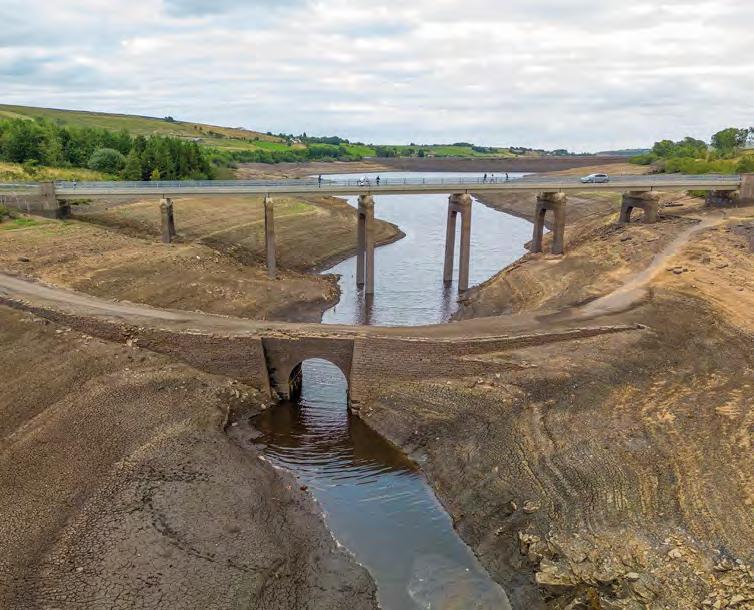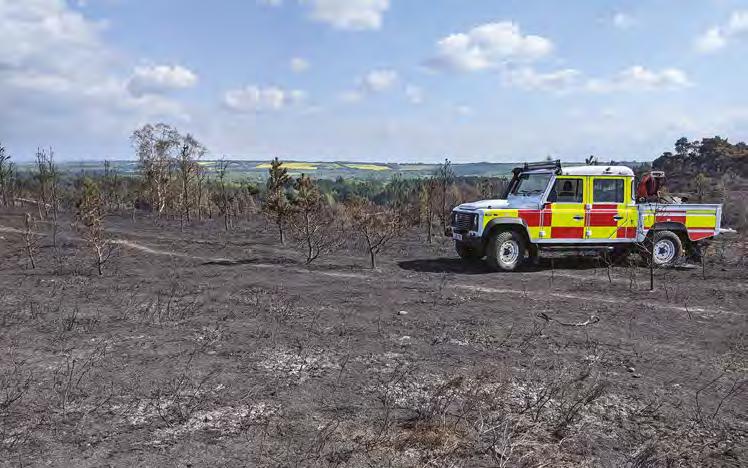
5 minute read
National news
from Wild Magazine Winter 2022
by essexwt
UK NEWS
UK UPDATE
Beavers are making a comeback across the UK
You made the government give a dam!
ngland has taken a few tentative steps towards seeing a return of beavers to the wild, following new legislation announced by Defra. The legislation will provide legal protections for beavers in England, making it an offence to deliberately capture, kill, disturb, or injure beavers, or damage their breeding sites or resting places, without holding the appropriate license. The legislation is scheduled to come into force in the autumn.
These new protections could pave the way for beavers to be released into the wild in England under license, finally making a widespread comeback after being hunted to extinction in the 16th century. This decision echoes the path taken in Scotland, where beavers were declared a European Protected Species in 2019, affording them similar protections to those proposed in England.
The legislation was initially due to be laid in parliament on the 19th of July, but the UK Government held it up at the last minute. Following outrage from nature charities and the wider public, including lots of Wildlife Trust supporters, the decision was reconsidered and the announcement made just a few days later.
Beavers are ecosystem engineers. Their actions create thriving and dynamic wetlands that bring a wealth of benefits to both nature and people, including playing a critical role in adapting to a changing climate. Long-term studies of beavers from the Scottish Beaver Trial and in enclosures in England have demonstrated the improvements they can bring to our rivers and wetlands, making it clear that beavers belong in our landscape.
Commenting on the UK Government’s decision, The Wildlife Trusts’ chief executive Craig Bennett says: “The widespread return of wild beavers can be a game changer for restoring lost wetlands, benefitting all kinds of wildlife, and helping people by holding water back in the landscape, reducing the risk of wildfires and reducing the risk of flooding downstream. Bringing back wild beavers isn’t just a dream, it is a critical part of addressing the climate and nature crises.”
Whilst The Wildlife Trusts believe bringing back beavers is essential, reintroducing any ecosystem engineer is a delicate operation. Natural England is developing guidance on the management of beavers, setting out the actions that will or will not require a license. We are urging the UK Government to support ambitious and carefully targeted reintroduction projects, reward landowners who make space for wetlands created by beavers, develop management systems that protect beavers and resolve issues effectively, and support local beaver management groups to deliver advice and assistance.
The news of this legislation came as Wildlife Trusts around England celebrated the birth of beaver kits at enclosed projects on nature reserves. The Welsh Beaver Project, led by Wildlife Trusts Wales, also saw its first kit born at an enclosure at Montgomeryshire Wildlife Trust’s Cors Dyfi nature reserve.

Get the latest on our journey to bring beavers back to Britain at
wildlifetrusts.org/saving-species/beavers
The beaver comeback
2001 Kent Wildlife Trust bring the first beavers back to Britain in an enclosure at Ham Fen.
2009 First beavers officially released into the wild by the Scottish Beaver Trial.
2014 Beavers discovered living wild on the River Otter in Devon. Devon Wildlife Trust begin England’s first wild beaver trial.
2017 The Scottish Beaver Trial release more beavers to reinforce the population.
2019 Beavers designated a European Protected Species in Scotland.
2020 Beavers allowed to stay on the River Otter.
2021 Wildlife Trusts release a record number of beavers (17) into fenced areas across the Britain.
2022 Legislation announced to make beavers a protected species in England.
Water levels dropped dangerouly low at Baitings Reservoir during one of the hottest UK summers on record in 2022

Wildfires are becoming more common due to climate change
Crisis calculations
The Wildlife Trusts have published a groundbreaking report examining the projected impacts of climate change on our nature reserves. It assesses the risks of a changing climate and what we need to do to help nature adapt. The report shows that extreme weather is already affecting many nature reserves through wildfires, flooding, and drought. Research finds that by the 2050s, half of our nature reserves will have 30+ days of very high fire risk a year, and 55% will see nearby river flows drop by more than 30% during times of low flow. The report also shares innovative Wildlife Trust projects that aim to reduce the impacts on wildlife. Read the report at
wtru.st/changing-nature

REMEMBERING HER MAJESTY The Queen
Queen Elizabeth II was celebrated for her passion for the outdoors, the countryside and rural life, lending her support to the work of The Wildlife Trusts and many environmental charities over the years. The Wildlife Trusts are proud to have been a part of Coronation Meadows — an inspirational idea to mark the 60th anniversary of The Queen’s Coronation in 2013. These meadows will stand as a lasting natural legacy. So far, 90 new meadows have been created, including…
Eyecott Hill, Cumbria
Meadows at Cumbria Wildlife Trust’s Eycott Hill nature reserve were brought to life with traditional Cumbrian hay meadow flowers and grasses. The restored meadows have provided inspiration for textile arts project for adults with learning disabilities and older people with dementia.
Fir Grove, Norfolk
Roadside verges hold some of the last fragments of Norfolk’s flower-rich meadows, providing a seed base to create farmland meadows once more. Norfolk Wildlife Trust volunteers helped harvest green hay from a roadside nature reserve to create the seven acre Coronation Meadow at Fir Grove.

Dunchurch Meadow, Warwickshire
This new meadow was strewn with green hay harvested from Warwickshire Wildlife Trust’s Draycote Meadow reserve, where up to 20,000 green-winged orchids bloom. Many new flowers have become established at Dunchurch, including green-winged orchids.







